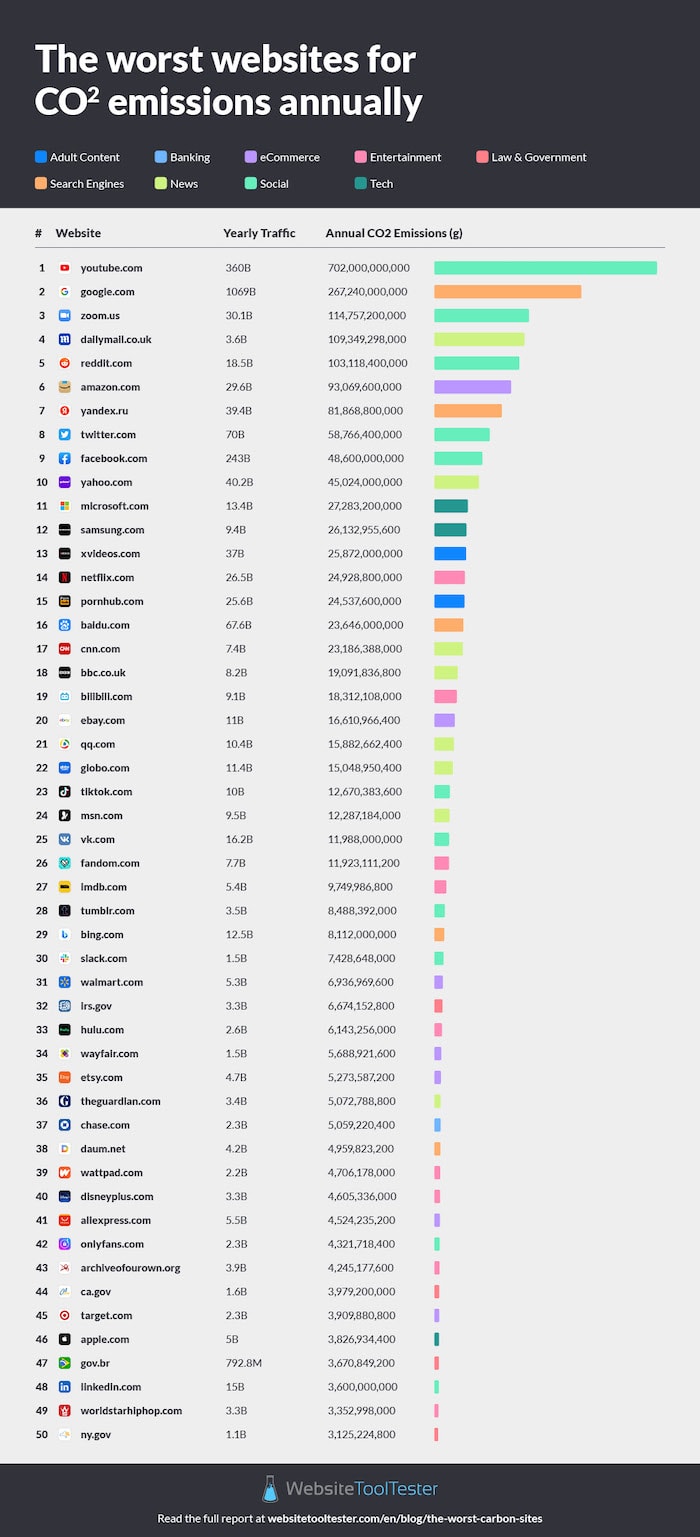Are you familiar with the term “Energy Vampire”? No, this is not about entities sensitive to the sun or glow in the sun, rather, plugged in devices that are draining energy, even when not in use. For example, a cell phone charger is probably costing you something with no phone attached.
Switching gears now, let’s focus on our favorite pass time - Nothing beats spending endless hours online. Now check this:
-
31%
of adults are online almost constantly
-
Americans spend an
average screen time of 5.4 hours
on their mobile phones daily.
- 3.196 billion people actively using social networks
Once that that has synced in, let’s see which websites have these most impact on carbon emissions based on their usage. WebsiteToolTester compiled data from the homepages of 40 most popular websites and found the top 3 culprits as follows:
-
YouTube produces the most CO2
emissions annually, that’s 702 billion grams of carbon.
-
Google.com, which accounts for 267
billion grams annually.
- Zoom produces 114 billion grams of CO2 annually.
Social media websites Twitter and Facebook create 58 billion and 48 billion grams of carbon annually, respectively. Other top 50 worst websites are Yahoo.com, Microsoft.com, Xvideos.com, Netflix.com, Pornhub.com, Ebay.com, Slack.com, Hulu.com, Apple.com and Linkedin.com.
Now on a per visit basis, top 3 offenders are:
-
Dailymail with 30.3g of CO2 per
visit
-
Reddit with 5.58 g
- Slack with 4.85g
Outside the top-3, fashion brands make up nearly half of the 20 worst
websites (such as Ulta Beauty, Sephora and Shein)
Now that you know it’s not only factories and cars that are bad for the environment, maybe we can collectively curb the trends. Go spend time outside, run, hike, swim, or what ever suits your fancy. You have the power of knowledge now, how you use it, is up to you!

1 Comments
In your opinion, why have stakeholders given corporate Social responsibility more attention recently? Thanks for sharing for response on Quora and this link, https://businessfundamentals101.quora.com/In-your-opinion-why-have-stakeholders-given-corporate-Social-responsibility-more-attention-recently
ReplyDelete